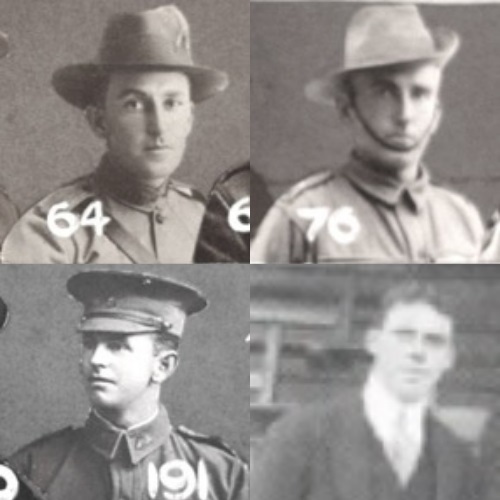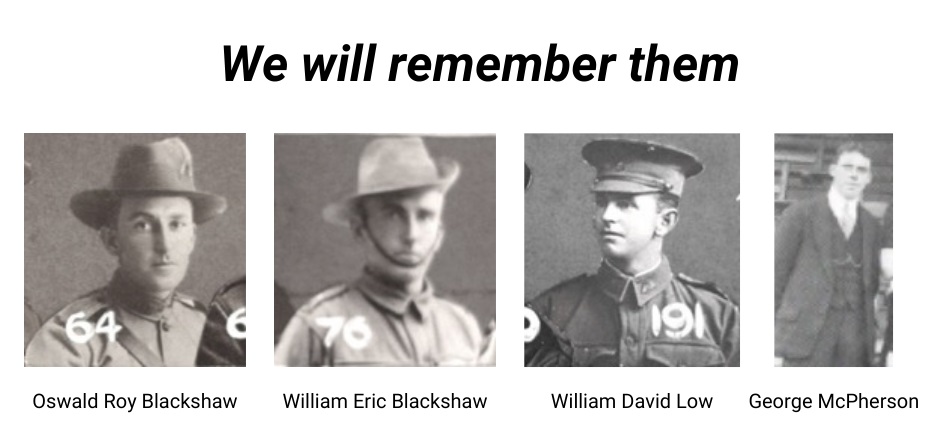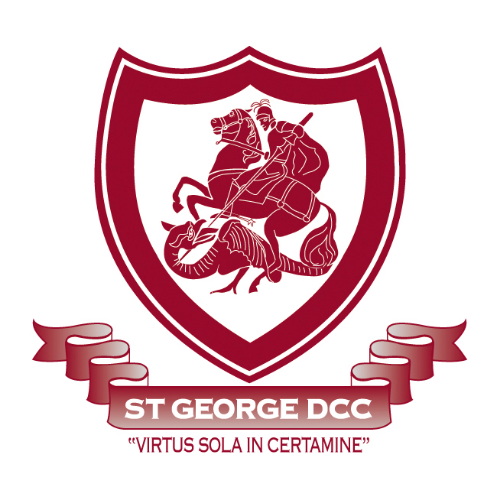St George District Cricket Club and The First World War
St George Cricket Club | April 24, 2024

When Charlie Crispo and Allen Cooper walked onto Hurstville Oval on 27 September 1919, the warm greeting they received from the crowd was not simply for the beginning of a cricket match. The “Diggers”, led by Wally Louden, were an XI made up of members and ex-members of the St George DCC who had been on active service during the First World War. At 4pm, play was adjourned for the unveiling of the St George DCC roll of honour. The roll contained the names of members of the club who had served their country in the terrible conflict. Not all of them had returned home. The honour roll has since been lost, however, efforts are now being made by the club to produce an honour roll to commemorate the service of these men, as well as those who served in other conflicts whilst playing with the club.
Recent research by Local Studies Librarian John MacRitchie, as well as research conducted by Ronald Cardwell and Nathan Anderson for Preserving the Tradition – The Pioneers of 1921-22, has uncovered valuable information on St George DCC servicemen from the First World War.
In its annual report for the 1914-15 season, the club noted that seven of its members had enlisted for service “in the Great War of the Nations”. The seven were Charles David McIntosh, Robert Bruce, William David Low, George McPherson, Glennie Alexander Lamb, Albert Joseph Phegan, and Oswald Roy Blackshaw. It was stated that,
“For each one your club expresses the sincerest wishes for a safe, speedy, and triumphant return to Australia.
Twelve months later, in the annual report for 1915-16, it was stated that McIntosh had been promoted to Lieutenant and Bruce to Sergeant. Another three St George cricketers in Eric Harold Emery, Anton Adolph Ohlson, and Reginald Ernest Russell had also enlisted with the Australian Imperial Expeditionary Forces. Once again patriotic in its support, the report stated:
“Your Committee extend their tribute of praise to these members in their patriotic action and sincerely trust that the good fortune which has so far followed all our members on active service, will continue to the end of the War.”
The club also regrettably recorded their sympathy with George McPherson after the death of his brother Thomas on 7 May 1916. Tragically for the McPherson family, George, the salesman from Rockdale, was killed only two months later than his brother. He died of wounds on 28 July 1916 after serving at Gallipoli and in France, where he was promoted to Lance-Corporal a month before his passing. George McPherson became the first war casualty of the St George District Cricket Club.
1916-17 marked a difficult period for the club. Alongside the McPherson’s, the club was also shocked by the sudden death of the esteemed Vice-President, Mr. Harry J. Pryde. An obituary in the 1915-16 Annual Report noted that Mr Pryde,
“had endeared himself to both members and visitors to our ground by his close attachment to the game and cheery demeanour on all occasions. Words cannot adequately express our regard for the good qualities of the deceased whose memory will be a lasting one to all members who had made his close acquaintance.”
For the second successive season, no premiership honours were allotted in the Grade competition. There was a greater emphasis for cricketers “to consider the possibility of ranking up with those splendid members of the British Empire who have sealed the fame of Australia on the battlefields of Gallipoli, Egypt, Mesopotamia and France.” One such man to heed the call was the popular St George DCC clubman Charles Harold Crispo. A brickmaker from Arncliffe who was also a fine right hand batsman and left hand bowler, Crispo was farewelled at a function organised by both the St George and Arncliffe cricket clubs, such was his popularity. Joining Crispo on the front were fellow clubmen Charlie Walker, Charles Arthur Pitt, and Frederick Roy Hume. The club was apprehensive in its encouragement as the war continued:
“To all of our comrades who have placed their services at disposal of Country we extend our sincerest wishes for a continuance of good fortune, and trust they will all be spared to return safe and sound, despite the somewhat uncertain position facing us.”
The report also regrettably recorded the passing of Mr Frank Barter. Mr Barter, whose sons Milton and Charles went on to play First Grade for the club in the 1921-22 season was described as
“a gentleman who had always evinced the closest interest in the game locally.”
As the conflict in Europe continued into 1918, some lamentable news reached the suburbs of St George. The Annual Report for 1917-18 regrettably recorded the passing of Gunner Gerald Whitney Bruce (22 October 1917), Trooper William Eric Blackshaw (killed in action at Palestine on 8 November 1917), and Private William David Low (died of wounds in France on 1 August 1918). The deaths of Joseph Alexander Johns (killed in action on 16 August 1918) and William Bond Hastings Kenwood (killed in action on the Somme on 2 September 1918) had occurred after the publication of the report and were not mentioned in a very brief Annual Report in 1919.
As the club came to terms with the loss of some of their fellow members, it was suggested that a Roll of Honour be created to commemorate the service of their clubmen. Mr E. Newlyn “kindly promised to make” the Roll. It was also proposed for framed photos of the late Mr. Pryde and Mr. Barter to be placed in the pavilion; such was the esteem in which the two gentlemen were regarded.
Despite the difficulties faced during the war years, the club found itself in a strong position coming into the 1920s. The Annual Report for 1918-19 regarded the season as “one of the most successful since the Club’s inception” after Alf Emery’s 1007 runs at 67.1 saw the Second Grade side finish fourth. Emery’s effort is still yet to be beaten in Second Grade over a century later.
It was against these difficult days in such an early period of its history, that the St George DCC came together. The men who served did so represented not only their families and their country, but also their cricket club. Even now, more than a century later, we owe them our gratitude.
Nathan Anderson
June 2021


